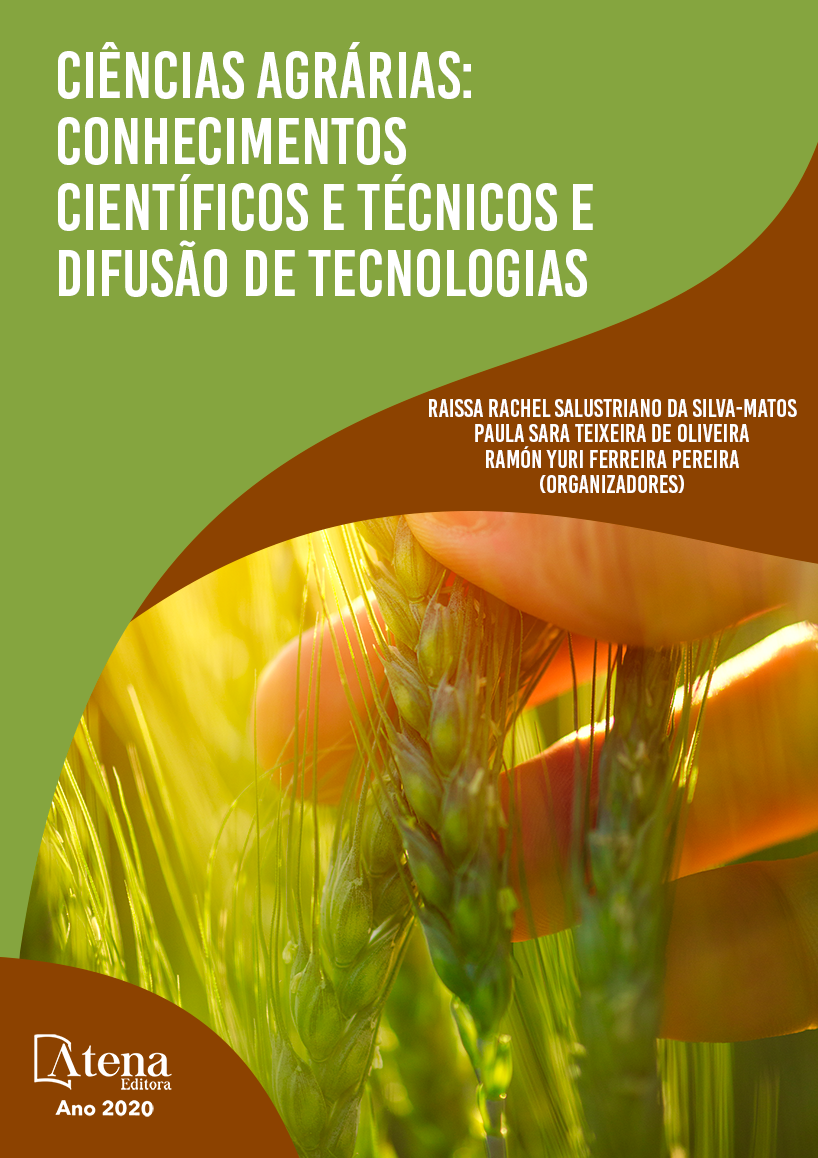
RESPOSTA FISIOLÓGICA DA BATATA-DOCE EM FUNÇÃO DE CONCENTRAÇÕES DE CO2 E COMPRIMENTOS DE LUZ
Objetivou-se com esse trabalho avaliar os efeitos fisiológicos na batata-doce submetidas a concentrações de CO2 e comprimentos de luz com o analisador de gás infravermelho - IRGA. O estudo foi conduzido na Universidade Federal do Tocantins (UFT), campus de Gurupi. Utilizou-se três plantas de batata-doce, sendo que as avaliações foram realizadas trinta dias após o plantio. Em cada planta foram testadas doze concentrações de CO2 simulado de 50,100, 200, 300, 400, 600, 800, 1000, 1200, 1400, 1600, 1800 µmol.mol-1 e onze comprimentos de luz simulado de 2000, 1800, 1500, 1200, 1000, 800, 500, 250, 100, 50 e 25 µmol m-2 s-1. Após as avaliações, os dados coletados foram tabulados e ajustados no software Microsoft Excel, com posterior confecção dos gráficos. Para as plantas de batata-doce percebe-se que quanto maior concentração de CO2 há um aumento da taxa fotossintética e em relação ao comprimento de luz, a melhor resposta foi quando recebeu 1000 µmol m-2 s-1. Contudo, a partir de cada teste, seja com concentrações de CO2 e comprimentos de luz ou outros métodos, é possível entender, dimensionar e prever quais as respostas e o funcionamento das plantas em relação às mudanças climáticas.
RESPOSTA FISIOLÓGICA DA BATATA-DOCE EM FUNÇÃO DE CONCENTRAÇÕES DE CO2 E COMPRIMENTOS DE LUZ
-
DOI: 10.22533/at.ed.93020170715
-
Palavras-chave: dióxido de carbono, fotossíntese, trocas gasosas
-
Keywords: carbon dioxide, photosynthesis, gas exchange
-
Abstract:
The objective of this work was to evaluate the physiological effects in sweet potatoes submitted to CO2 concentrations and light lengths with the infrared gas analyzer – IRGA. This study was conducted in the Federal University of Tocantins (UFT), Gurupi campus. Three sweet potato plants were used, and the evaluations were carried out thirty days after planting. In each plant were tested twelve concentrations of CO2 simulated of 50,100, 200, 300, 400, 600, 800, 1000, 1200, 1400, 1600, 1800 µmol.mol-1 and eleven lengths simulated light of 2000, 1800, 1500, 1200, 1000, 800, 500, 250, 100, 50 and 25 µmol m-2 s-1. After the evaluations, the collected data were tabulated and adjusted using software Microsoft Excel, with subsequent preparation of the graphics. For sweet potato plants, it is noticed that the higher the concentration of CO2 there is an increase in the photosynthetic rate and in relation to the length of light, the best response was when it received 1000 µmol m-2 s-1. However, from each test, whether with CO2 concentrations and lengths of light or other methods, it is possible to understand, scale and predict what the responses and the functioning of the plants are in relation to climate change.
-
Número de páginas: 8
- Grazielle Rodrigues Araújo
- Nadia da Silva Ramos
- Karolinne Silva Borges
- Rita de Cássia Moreira Rodrigues
- Sara Bezerra Bandeira
- Patrícia Pereira da Silva
- David Ingsson Oliveira Andrade de Farias
- Eduardo Andrea Lemus Erasmo
- Flávia Barreira Gonçalves


